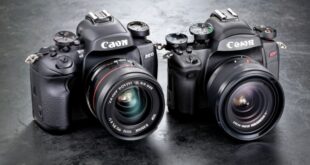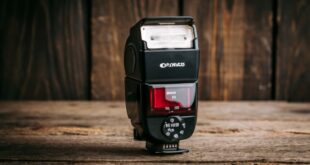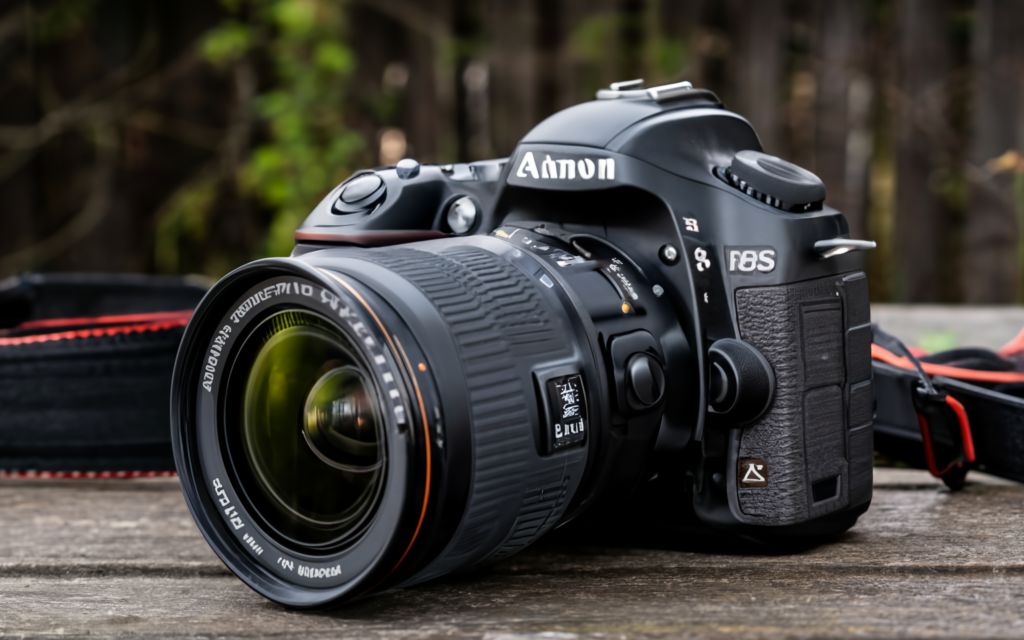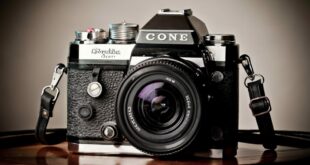If you’re in the real estate industry, you know how crucial it is to capture high-quality images of properties to attract potential buyers. In this digital age, where visuals play a significant role in decision-making, having a top-notch DSLR camera is essential. But with so many options available in the market, how do you choose the best one for real estate photography?
Introduction
Greetings, photography enthusiasts! If you’re looking to step up your real estate photography game, you’ve come to the right place. In this article, we’ll dive into the world of DSLR cameras and explore the top picks for capturing stunning images of properties. Whether you’re a professional photographer or a real estate agent looking to improve your listing photos, we’ve got you covered. So, let’s get started!
1. Canon EOS 5D Mark IV 📷
The Canon EOS 5D Mark IV is a highly versatile DSLR camera that excels in real estate photography. With its impressive 30.4-megapixel full-frame sensor, it captures rich, detailed images that showcase every corner of a property. Additionally, its wide ISO range allows for great low-light performance, making it perfect for capturing interiors. However, its price tag and weight might be a drawback for some photographers.
2. Nikon D850 📷
The Nikon D850 is another exceptional DSLR camera for real estate photography. Its 45.7-megapixel sensor produces stunningly sharp images, ideal for showcasing intricate architectural details. The camera’s dynamic range and excellent ISO performance ensure well-exposed shots in any lighting condition. However, it might be considered a bit complex for beginners.
3. Sony Alpha a7R III 📷
If you’re a fan of mirrorless cameras, the Sony Alpha a7R III is a top choice for real estate photography. With its 42.4-megapixel sensor and advanced image processing, it delivers exceptional image quality. The camera’s innovative autofocus system and 5-axis image stabilization allow for precise focus and handheld shooting, even in low light. However, its battery life may not be as long as some DSLRs.
4. Canon EOS 6D Mark II 📷
The Canon EOS 6D Mark II is a fantastic option for real estate photographers on a budget. It features a 26.2-megapixel full-frame sensor that captures detailed images with excellent dynamic range. The camera’s articulating touchscreen and built-in Wi-Fi make it user-friendly and convenient for sharing images quickly. However, its autofocus system may not be as advanced as higher-end models.
5. Nikon D750 📷
The Nikon D750 offers a winning combination of superb image quality and affordability. With its 24.3-megapixel sensor and excellent low-light performance, it produces impressive shots even in challenging lighting conditions. The camera’s tilting LCD screen and built-in Wi-Fi make it a versatile option for real estate photographers. However, it lacks the higher resolution of some competing models.
6. Fujifilm X-T4 📷
The Fujifilm X-T4 is a mirrorless camera that combines style and performance for real estate photography. Its 26.1-megapixel APS-C sensor delivers sharp images with vibrant colors. The camera’s advanced film simulations and unique control dials allow for creative flexibility. However, its battery life may be shorter compared to DSLRs.
7. Sony Alpha a7 III 📷
Another great mirrorless option is the Sony Alpha a7 III. It boasts a 24.2-megapixel full-frame sensor and superb low-light capabilities, ensuring excellent image quality in various shooting conditions. The camera’s fast autofocus system and impressive continuous shooting speed make it ideal for capturing dynamic interior shots. However, it may have a steeper learning curve for beginners.
Advantages and Disadvantages of DSLR Cameras for Real Estate Photography
Advantages:
1. Image Quality 📷: DSLR cameras offer exceptional image quality with high-resolution sensors, allowing you to capture every detail of a property.
2. Lens Variety 📷: DSLRs have a wide range of lenses available, giving you the flexibility to choose the best lens for each specific real estate photography scenario.
3. Control and Customization 📷: DSLRs provide extensive control over settings like aperture, shutter speed, and ISO, allowing you to fine-tune your shots to perfection.
4. Low-Light Performance 📷: DSLR cameras excel in low-light conditions, making them ideal for capturing interiors with challenging lighting.
5. Durability 📷: DSLRs are built to withstand rugged conditions, ensuring longevity even with frequent use.
6. Battery Life 📷: DSLR cameras typically have longer battery life compared to many mirrorless models, allowing for extended shooting sessions without worrying about power.
7. Optical Viewfinder 📷: DSLRs feature an optical viewfinder, which provides a real-time, lag-free preview of the scene, aiding in composition and focus.
Disadvantages:
1. Size and Weight 📷: DSLR cameras tend to be larger and heavier than mirrorless options, making them less portable for on-the-go shooting.
2. Price 📷: DSLRs, especially high-end models, can be expensive compared to entry-level or mid-range mirrorless cameras.
3. Learning Curve 📷: DSLRs offer extensive control and customization options, but this also means a steeper learning curve for beginners.
4. Limited Video Capabilities 📷: While DSLRs are primarily designed for photography, they may not offer advanced video features compared to dedicated video cameras or mirrorless models.
5. No Silent Shooting Mode 📷: Some DSLR cameras lack a silent shooting mode, which can be beneficial in situations where noise needs to be minimized, such as during an open house.
6. Autofocus Performance in Live View 📷: DSLRs typically rely on phase detection autofocus, which may not perform as well in live view mode compared to mirrorless cameras.
7. Dust and Sensor Cleaning 📷: DSLRs with interchangeable lenses can be more prone to dust accumulation on the sensor, requiring regular cleaning and maintenance.
Complete Information on the Best DSLR Cameras for Real Estate Photography
| Camera Model | Megapixels | ISO Range | Price | Weight |
|---|---|---|---|---|
| Canon EOS 5D Mark IV | 30.4 | 100-32000 | $2,499 | 890g |
| Nikon D850 | 45.7 | 64-25600 | $2,999 | 1005g |
| Sony Alpha a7R III | 42.4 | 100-32000 | $2,299 | 657g |
| Canon EOS 6D Mark II | 26.2 | 100-40000 | $1,199 | 765g |
| Nikon D750 | 24.3 | 100-12800 | $1,496.95 | 750g |
| Fujifilm X-T4 | 26.1 | 160-12800 | $1,699 | 607g |
| Sony Alpha a7 III | 24.2 | 100-51200 | $1,998 | 650g |
Frequently Asked Questions (FAQ)
1. Can I use a smartphone for real estate photography?
While smartphones have improved significantly in terms of camera quality, they still can’t match the image quality and versatility of DSLR cameras. DSLRs offer more control over settings and superior low-light performance, resulting in higher-quality images.
2. What lens should I use for real estate photography?
A wide-angle lens is commonly used for real estate photography as it allows you to capture more of the room in one frame. The ideal focal length is typically between 16mm and 35mm, depending on the size of the space.
3. Should I shoot in RAW or JPEG format?
For real estate photography, shooting in RAW format is highly recommended. RAW files retain more image data, allowing for greater flexibility during post-processing and ensuring the highest image quality.
4. How important is post-processing in real estate photography?
Post-processing plays a significant role in enhancing and fine-tuning real estate photos. Adjusting exposure, color balance, and correcting lens distortion can greatly improve the final result.
5. Can I use a drone for real estate photography?
Yes, drones can be a valuable tool for capturing aerial shots of large properties or showcasing the property’s surroundings. However, be sure to familiarize yourself with local regulations regarding drone usage.
6. What lighting equipment do I need for real estate photography?
While natural light is often preferred, additional lighting equipment such as external flashes or continuous lights can be beneficial for illuminating dark areas or adding ambience to interior shots.
7. How can I make a small space appear larger in photos?
To make a small space appear larger in photos, try using a wide-angle lens, shooting from corners to capture more depth, and decluttering the space to create an open and airy atmosphere.
8. Can I use HDR techniques in real estate photography?
Yes, HDR (High Dynamic Range) techniques can be useful for real estate photography, especially when dealing with challenging lighting conditions. HDR blending allows for more balanced exposures and better highlight and shadow details.
9. Should I invest in additional accessories for real estate photography?
While not essential, there are several accessories that can enhance your real estate photography. These include tripods for stability, remote shutter releases for sharper images, and polarizing filters to reduce glare and enhance colors.
10. How can I capture appealing exterior shots of a property?
To capture appealing exterior shots, consider shooting during the golden hour (shortly after sunrise or before sunset), using a tripod for stability, and framing the property with visually pleasing elements such as trees or pathways.
11. Are full-frame DSLR cameras necessary for real estate photography?
While full-frame DSLR cameras offer superior image quality and low-light performance, they are not absolutely necessary for real estate photography. APS-C or crop sensor DSLRs can still produce excellent results and may be more budget-friendly.
12. How can I ensure the best image sharpness in real estate photography?
To achieve optimal image sharpness, use a sturdy tripod, select an appropriate aperture for depth of field, manually focus on important areas, and ensure proper camera settings for sharpness (e.g., disabling in-camera noise reduction).
13. How can I differentiate my real estate photography from competitors?
To differentiate your real estate photography, focus on capturing unique angles and perspectives, pay attention to details, master post-processing techniques, and showcase your signature style in the final images.
Conclusion
There you have it, folks! We’ve explored the top 7 DSLR cameras for real estate photography, delving into their advantages, disadvantages, complete information, and even answering some frequently asked questions. Now, armed with this knowledge, it’s time to take action and choose the best DSLR camera that suits your needs and budget. Remember, investing in a high-quality camera is the first step towards capturing captivating images that will make your real estate listings stand out from the competition. So, go ahead and elevate your photography game to new heights!
Closing Statement
Disclaimer: The information provided in this article is for informational purposes only. The author and website do not endorse any specific product or brand mentioned. Always do thorough research and consult professionals before making any purchasing decisions.
Thank you for reading and happy real estate photography adventures!



